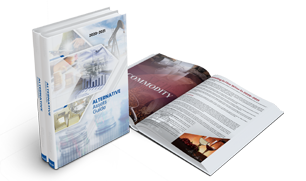
Never miss an important update |
Click to get notified about important updates only. |

99 Alternatives
Opportunities are Infinite
Capital distributed per predefined standards helps in financial risk management. The lender restrains unjustified asset expansion, and banks hold deposits that help institutions when they fail to perform in business.
Such deposits help to reduce potential moral hazards.
It is the core capital that a bank holds in its reserves through activities like lending, investment, and trading.
It mostly involves the capital held in assets that can provide enough money to fulfil needs like common stocks, preferred stocks, and retained earnings.
It provides the reserves and the primary source of funds.
It indicates the assets a bank holds to continue providing funds for the customer's business needs.
It can be held to show the strength of a bank that measures the financial preparedness of the financial institution to handle emergencies.
Not all types of assets and investments are risky. Like the money in ATM is safer than mortgages.
The risk factors have been divided into Tiers where Tier1 include total shareholder equity, non-MSR intangibles, certain hybrid securities, controlling interests, accumulated other comprehensive income (AOCL) and the regulatory deductions or adjustments and the qualifying common equity tier 1 minority interests and the federal banking agencies expect the majority of the common equity tier 1 capital to be in the form of common voting shares.
Common equity Tier 1 capital is the most loss-absorbing form of capital, and it involves common stocks, treasury stocks, and retained earnings.
Tier 2 capital includes the allowance for loan and lease losses as a per cent of good-weighted assets, subordinated debt, qualifying preferred stocks, and qualifying tier 2 minority interests.
If a bank invests in an instrument that qualifies as tier 2 capital, it is deducted from tier 2 capital.
If it qualifies as tier 1, it is deducted from tier 1; if it qualifies as common equity tier 1, it is deducted from common equity tier 1.
Suppose the bank does not have sufficient tier 2 capital to absorb the deduction. In that case, the excess is deducted from additional tier 1 or for common equity tier 1 – if the additional tier 1 capital is not adequate.
Alternative investment instruments like common or preferred stocks are deducted from each capital tier. However, the investment must analyze whether it is significant, depending on the per cent of common stock the bank owns in other financial companies.
Real estate remains one of the most time-tested...
From liquifying your asset to any time you want to have...
Impact investing in real estate is a growing trend with...
Whether buying your first home or selling your...
What is better Silver or Sterling Silver? We all know...
How much do Twitch Streamers Make? Man is fun-loving...
Copyright © 2025 99alternatives Ltd. All rights reserved.
Designed and Managed by Mont Digital


